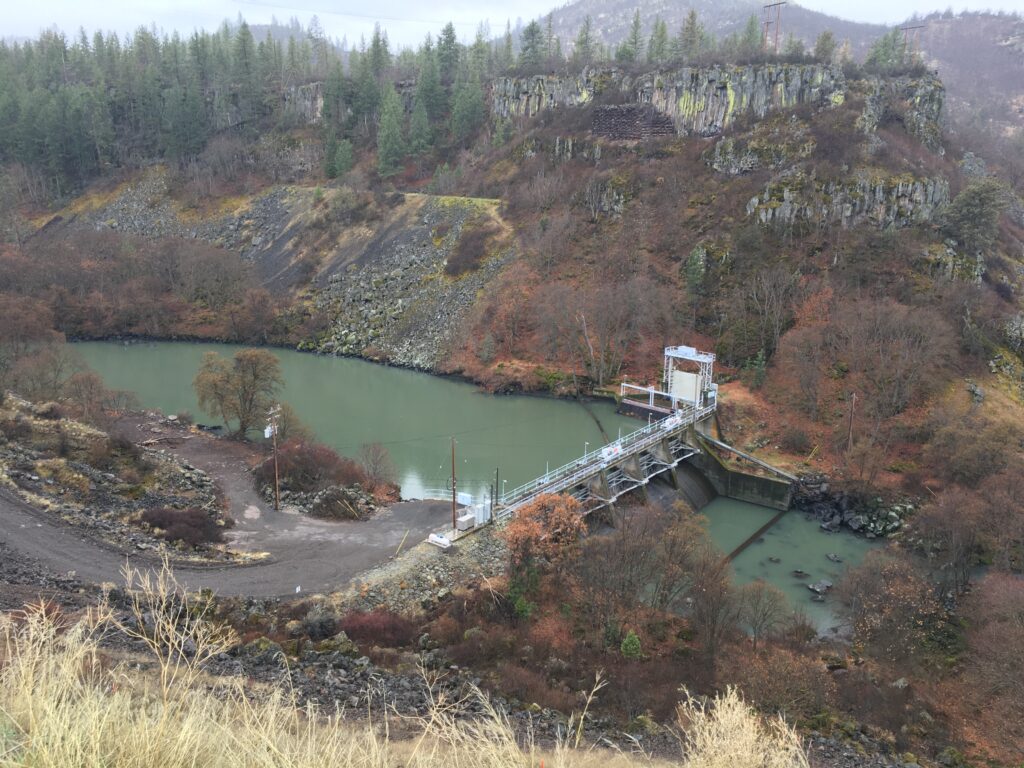Dam Removal on the Klamath: Reflections on How We Got here
By Ann Willis
When I first set foot in the Klamath watershed as a scientist back in 2008, dam removal seemed little more than a dream. An official decision had not yet been made by the Department of the Interior about whether dam removal was in the best interest of the Klamath basin, including its people, while salmon populations had declined to the point where the Secretary of Commerce closed West Coast commercial salmon fishing. Large-scale restoration projects were discussed as “possibilities,” but were by no means certain. And, though the ecological outcome of years of adverse land and water use practices was clear, the National Research Council reaffirmed in a report released that year that we lacked a “big picture” understanding of the Klamath River and its ecosystems.
Fast forward 15 years and I’m on the edge of my seat as three dams on the Klamath River see their final days, with a fourth already removed. How did we arrive at this historic juncture? How does a river that boasted the second-largest salmon population in California become constricted and sickly over the course of a century, and how did we progress from catastrophic fish kills to restoration and the climax of the world’s largest dam removal project?
There is no neat beginning, but the story behind the Klamath dam removals is deeply tied to people of the watershed, a narrative that stretches back to time immemorial. The Hoopa, Karuk, Klamath, Modoc, Yurok Tribes, and others stewarded the landscape and thrived along the Klamath and its tributaries, with the river constituting a core element of daily life, ritual, and culture. Prior to the damming of the Klamath River and as late as the 20th century, epic salmon runs were common. But an influx of settlers in the 19th century led to the widespread displacement of the region’s Tribes and the adoption of land and water use practices that negatively impacted the watershed. In the early 20th century, as hydropower became a priority for many of the surrounding communities, construction began on the first of four large hydropower dams totaling 400 vertical feet: Copco No 1 (1918), Copco No 2 (1925), J.C. Boyle (1958), and Iron Gate (1962). While the dams provided modest amounts of power for the surrounding communities, the ecological impacts were severe. By the 21st century, salmon populations, a key indicator of ecological health and an important species in their own right, had fallen to less than 5% of their historical average.
The decline of the Klamath’s health did not go unnoticed by those who call the watershed home, and after a massive fish kill in 2002 that resulted in more than 30,000 dead salmon, momentum began to build towards solutions amongst groups with different interests. Led by the Tribes, a years-long campaign to protect and restore the Klamath followed, with protests at the headquarters of Scottish Power, PacifiCorp, and Berkshire Hathaway to demand removal of the four dams. In 2010, PacifiCorp signed the Klamath Hydroelectric Settlement Agreement (KHSA) alongside Tribes, counties, state, and federal agencies, but it failed to pass through Congress. Restoration of the Klamath seemed on the ropes until 2016, when PacifiCorp, who owned and operated the four dams, began implementing a revised KHSA that did not require Congressional approval, eventually transferring ownership of the dams over to the Klamath River Renewal Corporation (KRRC). While the legal push for removal had cleared a major hurdle, struggles around relicensing continued into 2020. Despite the setbacks, and thanks in large part to Tribal leadership, the efforts of activist groups, and, ultimately, collaboration within the entire Klamath community, Copco No. 2 was removed in the fall of 2023, reconnecting parts of the watershed that hadn’t seen water from the Klamath River in nearly 100 years.

Since joining the Coalition for the Klamath Basin in 2001, American Rivers has worked alongside conservation groups to restore the ecological health, function and native diversity of the Klamath River basin, with an eye to the eventual removal of the dams operated by PacifiCorp. Now we are witnessing the removal of the remaining three dams in real time, simultaneously the largest salmon restoration project in history and the largest dam removal in history. It is a moment to celebrate, and the product of a long and serpentine history. We would be wise to reflect on the legacy of activism and advocacy that brought us to this point, the seemingly insurmountable obstacles and setbacks that had to be overcome, and the bridges that needed to be built to sustain the push towards removal. As we look beyond dam removal, we should recognize that while a freed Klamath River is momentous, there is much work, collaborative work, that needs to be done before the river is healed. This work is already happening. Tribes and private ranchers are working together to restore other parts of the Klamath watershed, ensuring that the knowledge and work of restoration stays within the basin. Dam removal on the Klamath has included work to ensure that drinking water supplies, recreational opportunities, and wildfire readiness are part of the conservation solution. I am proud of the work and commitment people of the Klamath have shown, not just to healing the river, but healing each other.
Originally posted on americanrivers.org.



